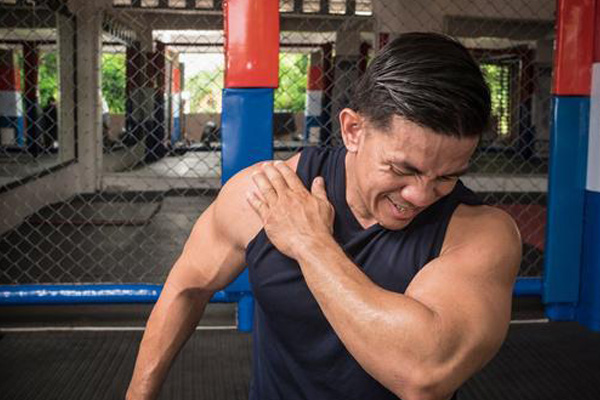
The latest advancements in the treatment of rotator cuff tears focus on enhancing healing, reducing recovery time, and improving long-term outcomes. These innovations include surgical techniques, biologic therapies, and non-surgical approaches. Here's a breakdown of the latest trends:
1. Biologic Augmentation
- Platelet-Rich Plasma (PRP) and Stem Cells: Biologic therapies are increasingly used to enhance the healing environment for rotator cuff repairs. PRP, stem cells, and other growth factors are injected into the surgical site or tear to promote tissue regeneration and accelerate healing. These biologics can improve recovery and potentially reduce re-tear rates.
- Patch Augmentation: A biologic or synthetic patch is used to reinforce the rotator cuff repair, providing additional support to the tendon while it heals. This is especially useful for larger or more chronic tears that may have poor tissue quality.
2. Arthroscopic Repair Advancements
- All-Arthroscopic Double-Row Repairs: Traditional single-row techniques are being replaced with double-row or transosseous-equivalent techniques, which provide stronger and more anatomically accurate tendon fixation. These techniques improve tendon-to-bone healing and reduce the risk of re-tear.
- Augmented Reality (AR) and 3D Imaging: These technologies allow surgeons to better visualize the shoulder's anatomy during arthroscopic procedures. This enhanced visualization improves surgical precision, particularly in difficult-to-reach areas, ensuring more accurate tendon placement and repair.
3. Superior Capsular Reconstruction (SCR)
- SCR for Massive Rotator Cuff Tears: In cases where rotator cuff tears are irreparable, superior capsular reconstruction (SCR) is a relatively new option. In SCR, a graft (usually from a donor or the patient’s own tissue) is placed between the glenoid and humerus, restoring stability and function to the shoulder. This technique helps prevent arthritis and improves range of motion in patients with massive or chronic tears.
4. Tendon Transfers
- Tendon Transfer Techniques: In cases where the rotator cuff cannot be repaired, tendon transfers (using nearby muscles like the latissimus dorsi or pectoralis major) are used to restore shoulder function. Advances in minimally invasive tendon transfer surgeries are improving outcomes, allowing patients with severe rotator cuff tears to regain better shoulder movement and strength.
5. Robotic-Assisted Rotator Cuff Repair
- Robotic Assistance: Robotic-assisted surgery is being applied to shoulder surgeries, including rotator cuff repairs, offering more precision in positioning and suturing. Robots provide real-time feedback, helping surgeons avoid critical structures and improve outcomes in complex tears.
6. Biodegradable Implants
- Absorbable Fixation Devices: The use of biodegradable implants (anchors and screws) in rotator cuff repairs allows for stronger initial fixation while the body naturally absorbs these devices over time. These implants help avoid long-term complications associated with permanent hardware and reduce the risk of inflammation or infection.
7. Non-Surgical Innovations
- Ultrasound-Guided Injections: Non-surgical treatments, such as corticosteroid injections, PRP, or stem cells, are now often administered using ultrasound guidance. This allows for precise targeting of the damaged rotator cuff tissue, maximizing the effectiveness of the treatment and potentially delaying or avoiding surgery.
- Advanced Physical Therapy Protocols: Early intervention with targeted physical therapy has been shown to be highly effective in treating partial rotator cuff tears. Focused rehabilitation programs that include strengthening of the shoulder stabilizers, neuromuscular control, and range-of-motion exercises help prevent the progression of tears and improve long-term shoulder function.
8. Capsular Release for Stiffness
- Arthroscopic Capsular Release: For patients with significant shoulder stiffness or frozen shoulder after a rotator cuff tear, arthroscopic capsular release is increasingly used. This technique releases tight structures around the shoulder joint to restore range of motion and relieve pain.
9. Tissue Engineering and Future Therapies
- Engineered Grafts and Scaffolds: Research into engineered tissues, such as collagen scaffolds, is ongoing. These materials may help regenerate the rotator cuff by providing a framework for new tissue growth. They could offer a long-term solution for chronic tears or re-tears in the future.
- Gene Therapy and Tissue Regeneration: While still in the experimental stages, gene therapy may one day offer a way to stimulate rotator cuff healing by modifying the biological environment of the repair site. Tissue engineering and regenerative medicine are advancing, with the hope of developing self-healing rotator cuffs.
10. Postoperative Monitoring and Rehabilitation
- Wearable Technology: Wearable sensors and smart devices are being used to track shoulder movement and muscle activation during rehabilitation. These devices help patients and clinicians monitor recovery progress in real-time, ensuring that exercises are performed correctly and that healing is on track.
- Accelerated Rehab Programs: With advances in surgical techniques and biologics, many patients are now able to begin physical therapy sooner after surgery. Early mobilization and customized rehab programs are designed to promote faster recovery while minimizing the risk of stiffness or weakness.
These innovations in rotator cuff treatment aim to provide better outcomes, reduce recovery time, and improve long-term shoulder function for patients of all activity levels.






